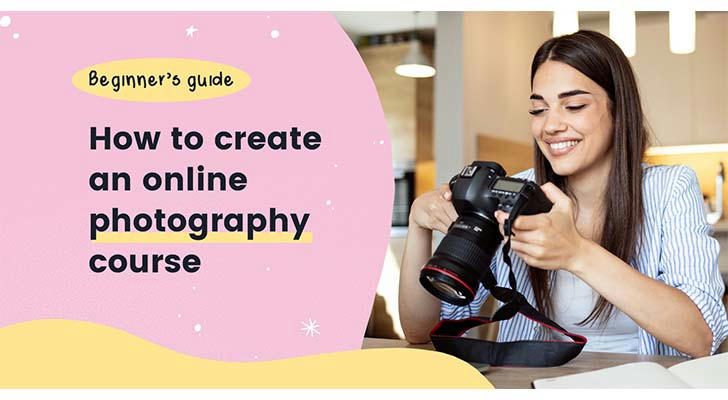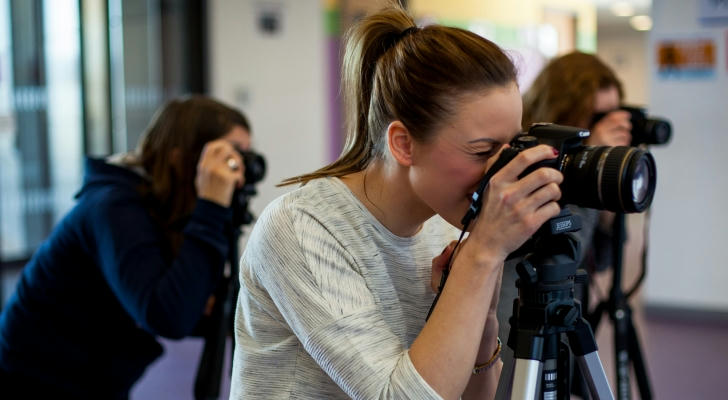Photography Course Learning Guide
Photography, as an art form, has become a significant means for people to document life and express emotions. For beginners, a structured photography course can aid in mastering techniques and cultivating an artistic eye. This article introduces the content, learning methods, and considerations of photography courses to help you embark confidently on your photographic journey.

I. Content of Photography Courses
1. Fundamental Photography Knowledge
Begin by understanding basic concepts and principles of photography, including:
The structure and functions of a camera
The relationship among the exposure triangle (aperture, shutter speed, ISO)
White balance and focal length
Grasping these fundamentals allows for flexible camera settings during shoots to achieve desired outcomes.
2. Composition and Visual Expression
Composition is the core of photographic art. Learn common compositional rules such as:
Rule of thirds
Symmetry
Leading lines
Practicing various compositional techniques enhances your ability to capture aesthetically pleasing images.
3. Lighting and Exposure Control
Light is the soul of photography. Mastering the characteristics of natural and artificial light sources and learning to adjust exposure settings under different lighting conditions can create artistic effects. Understanding shooting techniques during golden hours and blue hours enriches the expressiveness of your work.
4. Post-Processing
Post-processing is a crucial aspect of digital photography. Learn to use professional image editing software, such as Adobe Photoshop or Lightroom, to:
Adjust tones
Crop images
Retouch photos
Post-processing can compensate for shooting deficiencies and enhance the visual impact of your work.
5. Practical Shooting and Work Analysis
Theoretical knowledge must be complemented by practice. Engage in field shoots to accumulate experience and address real-world challenges. Regularly organize work-sharing sessions and analyses to exchange ideas with others, broaden perspectives, and improve photography skills.

II. Learning Methods and Recommendations
1. Develop a Learning Plan
Create a reasonable learning plan based on your schedule and goals. Break down the content into stages to ensure a deep understanding of each topic. Regularly assess your progress and adjust the plan to maintain continuous and effective learning.
2. Engage in Field Photography
Practice is the sole criterion for testing truth. Participate in field photography, experiment with different themes and scenes, and cultivate keen observation and creativity. Through practice, identify your interests and shortcomings, and make targeted improvements.
3. Join Photography Communities and Activities
Join photography clubs or online communities to participate in group activities and discussions. Sharing experiences and works with like-minded individuals expands your horizons and provides new inspiration and ideas.
4. Study Outstanding Works
Appreciate and analyze excellent photographic works to learn about composition, lighting, color, and other techniques. By emulating and practicing, you can gradually develop your own photography style.
Referencing works from professional photographers, such as those from the National Geographic Photography Contest, can provide inspiration.
5. Seek Professional Guidance
If possible, attend professional photography training courses for systematic instruction. Professional instructors can offer tailored advice based on your situation, helping you quickly enhance your photography skills.

III. Considerations
1. Combine Theory with Practice
Photography is a highly practical art. While learning, focus on theoretical knowledge but emphasize hands-on practice. Applying theory to practice is essential for truly understanding and mastering photographic techniques.
2. Maintain Patience and Perseverance
Improving photography skills requires time and patience. Do not be discouraged when facing challenges; maintain a positive learning attitude and persistently practice and reflect to achieve continuous progress.
3. Respect Copyright and Ethics
When photographing others or specific scenes, respect the privacy and rights of subjects, and comply with relevant laws and regulations. Ensure your works adhere to moral and ethical standards, conveying positive energy.
IV. Conclusion
Photography is an art form that allows for self-expression and life documentation. Through systematic learning and continuous practice, you will gradually master photographic techniques and cultivate an artistic vision.
It is hoped that this guide provides assistance on your photography journey, inspiring your passion and pursuit of photography.
